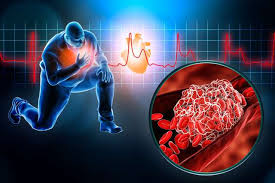Heart attacks, medically known as myocardial infarctions, are a leading cause of death worldwide. While they can manifest in various ways, chest pain is one of the most common and well-known symptoms. The connection between heart attacks and chest pain is deeply rooted in the physiology of the heart and the intricacies of pain perception.
The primary reason why heart attacks often cause chest pain is related to the heart’s anatomy and the way it receives oxygen and nutrients. The heart is a muscular organ that pumps oxygenated blood throughout the body. To accomplish this, it requires a constant supply of oxygen-rich blood. The coronary arteries are responsible for delivering this vital oxygen to the heart muscle. When these arteries become partially or completely blocked due to a buildup of fatty deposits (atherosclerosis), blood flow to parts of the heart muscle becomes compromised.
As the heart muscle is deprived of oxygen, it begins to suffer damage. This ischemia, or lack of blood flow, triggers pain receptors in the heart muscle, setting off a chain of events that lead to the sensation of chest pain. The brain interprets this pain as coming from the chest area because the heart is situated in the middle of the chest.
The nature of chest pain during a heart attack can vary. It is often described as a crushing, squeezing, or burning sensation. Sometimes, it can radiate to the arms, neck, jaw, or back, which is referred to as referred pain. This radiation occurs because the heart and the spinal cord share the same nerve pathways, leading the brain to interpret the pain as originating from these adjacent areas.
Additionally, the severity and duration of chest pain during a heart attack can fluctuate. Some individuals experience only mild discomfort, while others endure excruciating pain. The duration can range from a few minutes to several hours, or it may be continuous.
It’s essential to note that not all heart attacks manifest with chest pain. Some people, particularly women, older adults, and individuals with diabetes, may experience atypical symptoms or no chest pain at all. These symptoms can include shortness of breath, nausea, vomiting, lightheadedness, or overwhelming fatigue. This is why it’s crucial to be aware of the diverse ways a heart attack can present itself and seek medical attention promptly if you suspect one.
In addition to chest pain, another reason why it is a prominent symptom during a heart attack is its diagnostic significance. Chest pain, particularly if it is accompanied by other common symptoms like shortness of breath, profuse sweating, and a feeling of impending doom, can quickly alert both the individual experiencing the symptoms and medical professionals to the possibility of a heart attack. Rapid diagnosis and treatment are critical in preserving heart muscle and improving outcomes.
In conclusion, chest pain is a hallmark symptom of heart attacks because it reflects the physiological response of the heart muscle to ischemia caused by the blockage of coronary arteries. This pain’s location and character are influenced by the heart’s position and the shared nerve pathways between the heart and adjacent areas. While chest pain is a prevalent symptom, it’s crucial to recognize that heart attacks can present differently in various individuals, making it essential to be aware of atypical symptoms and seek immediate medical attention in case of suspicion. Early intervention can save lives and minimize the damage to the heart muscle.


